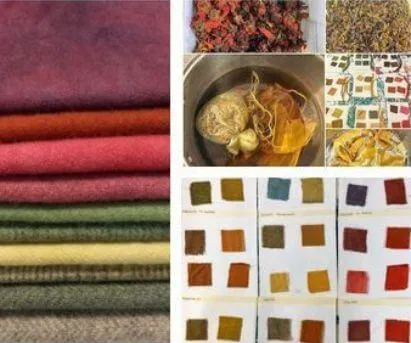8 Week Online Workshop
From Plant to Dye Pot
A Natural Dye Course for Rug Hookers & Wool Crafters!
Create beautiful colors with natural dyes that are colorfast and easy to achieve!
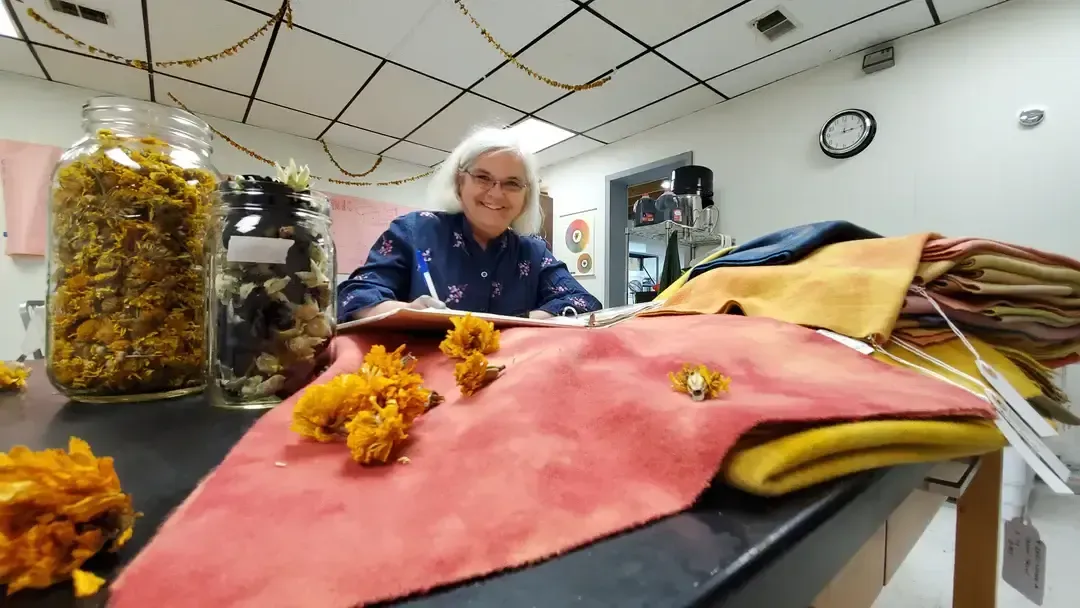
In this course you'll go from wondering if natural dyes could work for you...
To feeling confident and excited about using plants you've grown or foraged to create beautiful, sustainable, and colorfast wools!
Here's What You Get When You Join:
6 Training Modules (26 Lessons) + 2 Bonus Modules
Step by step instructions on downloadable PDFs
8 weeks of support with weekly live Q&As (Full Course Tier only)
Based on feedback from previous students, the workshop has been expanded to 8 weeks. This will give you plenty of time to complete all modules without feeling rushed.
All live sessions are recorded so you can catch the replay if you can't attend the live session
Lifetime access to the recordings so you can go at your own pace
Online community to get to know your classmates, share results, celebrate each other's successes, and post questions
THREE TIERS TO CHOOSE FROM
Tier 1: Full Course Option
The full course option is for the student who enjoys being part of a learning community and likes to have access to the instructor to ask specific questions as they arise during the course. It includes:
Full access to all the modules + Bonuses + PDF handouts
Access to the online community hosted in a private, members only Facebook Group
Access to weekly Zoom calls with Jean where you can ask questions and get answers in real time
Tier 2: Self-Guided Study + Online Community
This tier is for you if you enjoy being part of an online learning community and you are comfortable with getting your questions answered online. It includes:
Full access to all the modules + Bonuses+ PDF handouts
Access to the online community hosted in a private, members only Facebook Group
Tier 3: Self-Guided Study
This tier is for you if you prefer to work independently at your own pace. It is also for you if you are on a limited buedget and the other tiers are financially out of reach. It includes:
Instant access to all the modules + Bonuses+ PDF handouts
“Jean Haley is a fantastic teacher. She has all the most cherished attributes of a teacher: knowledgeable, clear instructions; patient with questions; sense of humor; exuberant cheerleader; adaptable to the pace and personality of her students."
- Jane M
"My favorite teachers in life are beyond passionate and dedicated to their work, they love what they do and find great joy in sharing their work with others. Thank you for being one of these teachers for me Jean.”
- Loraine M
By the end of this program, you will have confidence in your ability to:
Properly prepare fibers to accept dye & have it stick (be colorfast). No one wants to hook a disappearing rug!
Extract color from plants and use dye extracts. Learn the steps to being able to replicate colors you like! Of course, like any dyes, dye lots are important. No two batches will ever be exactly alike. But you can get close!
Over-dye and get multiple colors from a single dye pot. Some natural dyes are very sensitive to shifts in pH. You'll learn how to take advantage of this to achieve a range of colors from a single dye pot.
Make your wools interesting with textures and colors. As hookers and fiber artists, we like our wool to have lots of character. You'll learn a few tricks for achieving that artisanal effect.
Conduct experiments with locally grown and foraged plants. Learn how to test a new plant for color and for colorfastness so you can start experimenting in your own yard and neighborhood!
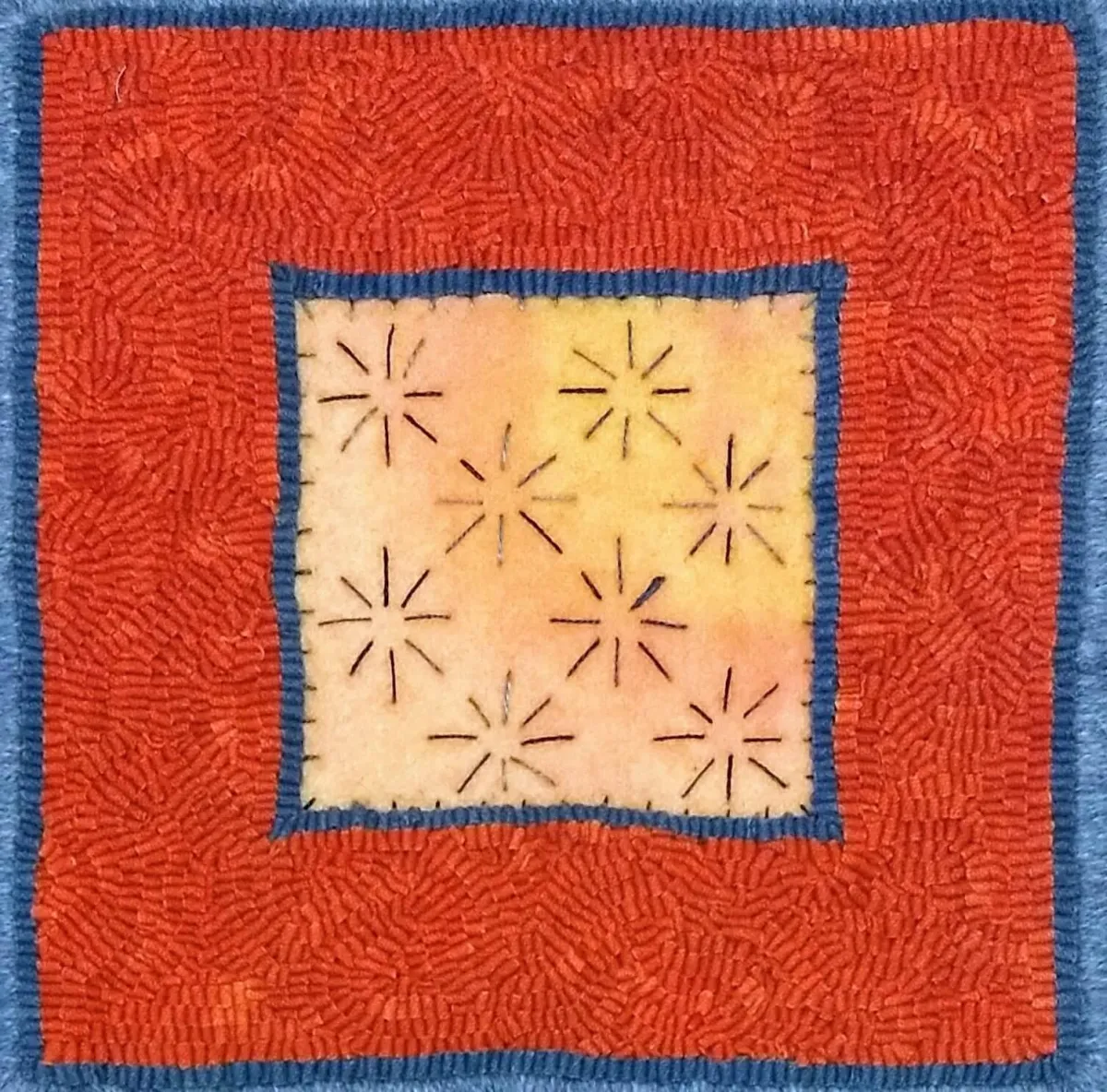
Here's How the Course Works
Upon registration, you'll gain access to Module 0: Getting Ready to dye.
Live Zoom calls start on Wednesday, April 3rd @5:30pm Eastern with a Welcome Celebration and Q&A.
Each following Wednesday, we'll have a live Q&A session where you can share what you've accomplished and ask all your questions.
I'll be there to answer them in real time! After the weekly Live Q&A, the next module will drop.
Graduation celebration is on May 22nd @5:30pm Eastern Time.
“Great session! Learned lots from a very organized, clear instructor. Highly recommended. Thanks Jean!"
- Katie S
"Thank you Jean for creating such an informative and interesting course that will inspire us all to new creative endeavours!”
- Judy Z
“I learned so much and really enjoy your style. You make complicated material very fun and engaging. I also liked the weekly check-ins. I am not usually a group person, but really enjoy getting to hear about other people's experiences and seeing what they are creating. This course is a terrific way to learn natural dyeing with wool, from start to finish. Jean is such a great teacher -- she shares her knowledge and skills in a fun and engaging way. You will come away from the course with all you need to feel confident in creating beautiful and lasting color, and you will connect with a fun community of makers. Just love, love, love this!"
- Michelle S
"This course provides great value and really interesting content, but most of all an extremely enthusiastic instructor. Jean is very quick to answer questions through the Facebook group created for the course, and her passion for natural dyeing is evident at all times. Jean is a great teacher, who is open to suggestion, improvement and laughs at herself if she ever stumbles. Her enthusiasm is infectious and she's very supportive of the results you achieve with your own dyeing.”
- Allyson M
“I would definitely recommend the course to anyone interested in natural dyeing. It provides a warm and encouraging atmosphere along with guidance and instruction in getting started in the world of natural dyeing."
- Debbie H
"Taking this course has been an invaluable experience! I have totally enjoyed your approach and humor, never felt overwhelmed, and appreciated your feedback.”
- Peggy O
Here's the full schedule
Access to Module 0 upon registration (see full content below)
Wednesdays at 5:30pm Eastern Time
April 3 - Kickoff Celebration + Module 1
April 10 - Q&A + Module 2.1
April 17 - Q&A + Module 2.2
April 24 - Q&A (Implementation week)
May 1 - Q&A + Module 3
May 8 - Q&A + Module 4
May 15 - Q&A (Implementation week)
May 22 - Q&A + Graduation Celebration!
Here's What You'll Learn in From Plant To Dye Pot...
Module 0: Getting Ready to Dye...
What equipment and supplies do you need? How do I make sure my dyes are colorfast?
The key to colorfastness with natural dyes is all about how you get your fibers ready to take (and keep!) the dye.
This is where you’ll learn how to scour and mordant your wool – the 2 most important steps for dyeing with nature.
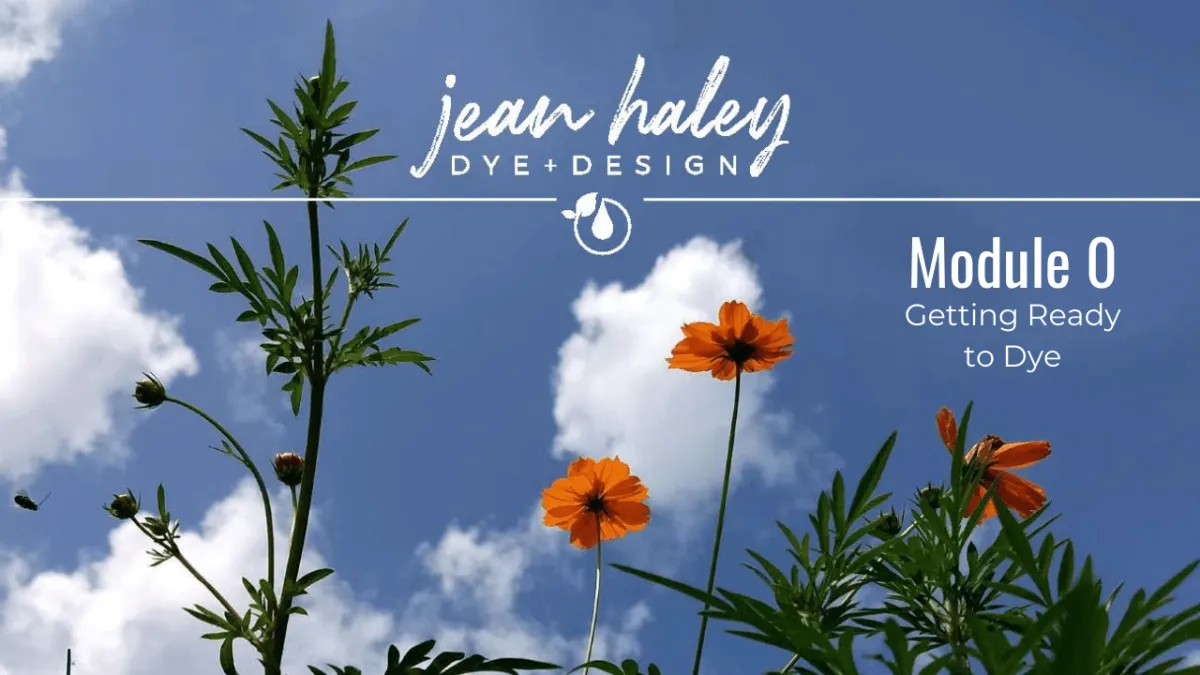

Module 1: Extracting Color + Dyeing Your Wool
Natural dyes come in different formats – plant leaves, stems, bark, flowers, insects, extracts.
Some dyes are sensitive to temperature and will give you different colors depending on how hot you get them.
You’ll learn how to extract different natural dyes, use extracts, and get your wool to soak them up.
Module 2-1: Color Theory + Making an Indigo Vat
Color theory applies with natural dyes!
We’ll do a quick review of color theory basics and then we’ll spend the majority of our time here on creating an organic indigo vat.
After you get your vat going, you’ll need to care for it properly if you want it to last.
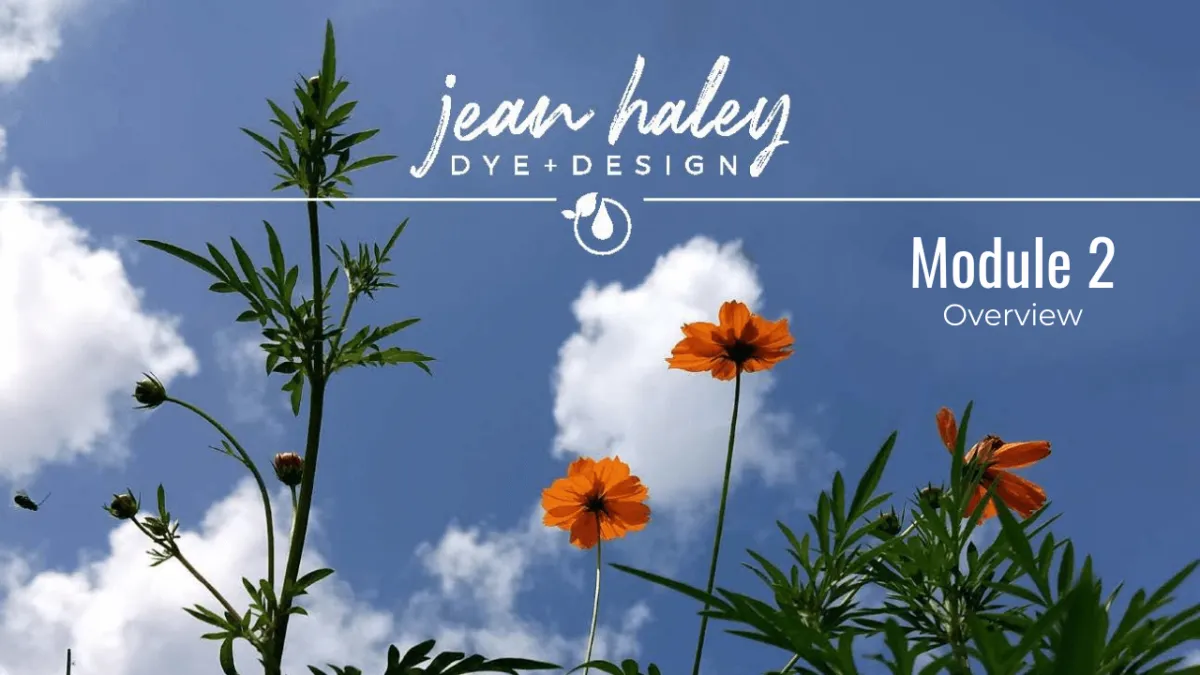
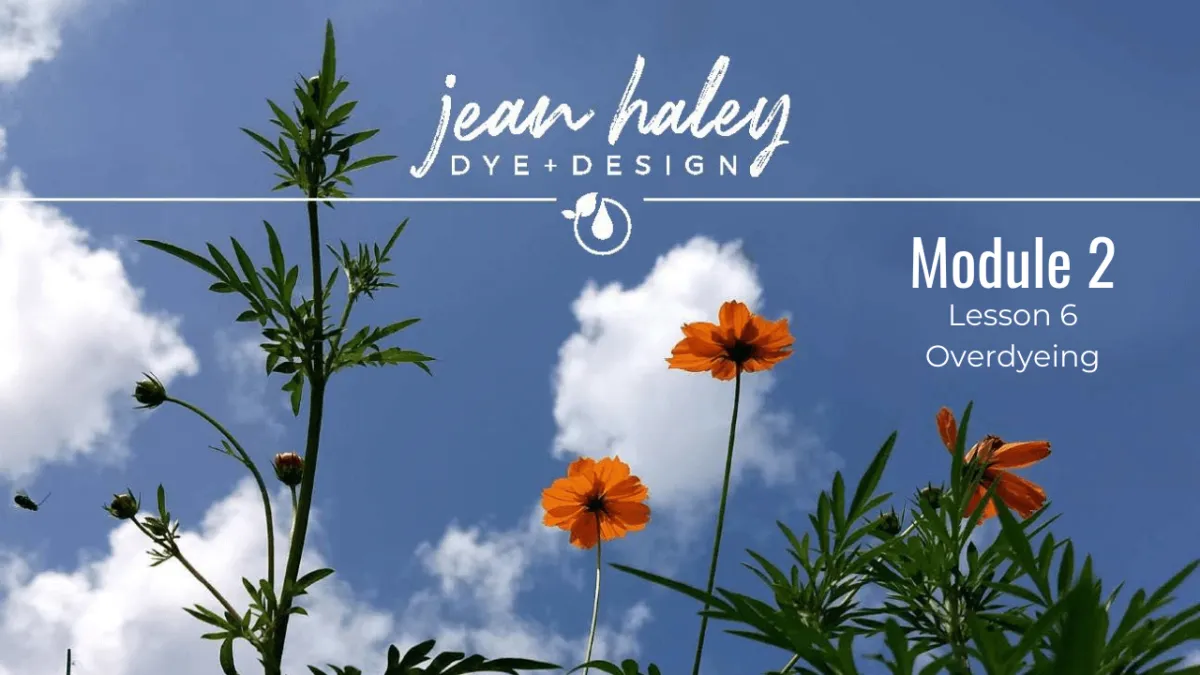
Module 2-2: Overdyeing + Shifting Colors
We’ll put that color theory to work with some overdyeing!
You’ll see what happens when we take the wools dyed in Module 1 and overdye them with another dye.
Here’s where you learn which overdye combos work best. You’ll also learn how to get 5+ colors from a single dye pot!
Module 3: Advanced Techniques
As rug hookers and wool crafters, we like our wool to have interest – texture and depth...
Maybe more than one color or speckled or mottled or… so many possibilities!
Here’s where we’ll play and experiment with advanced techniques to create that interest.
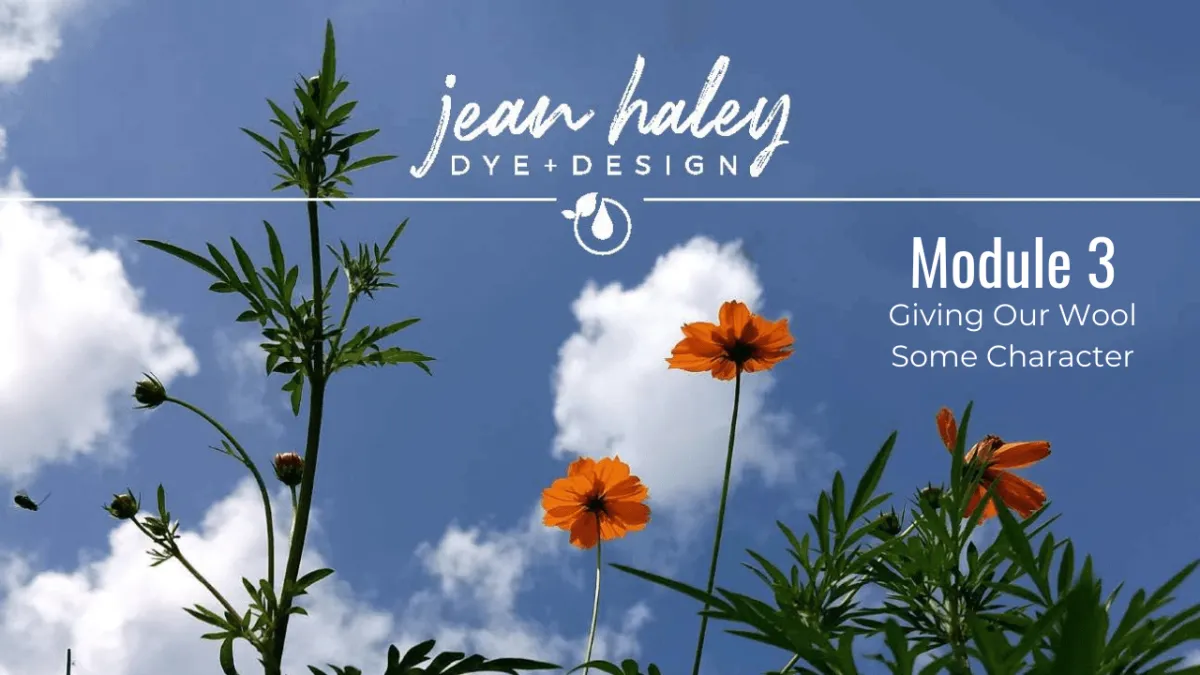
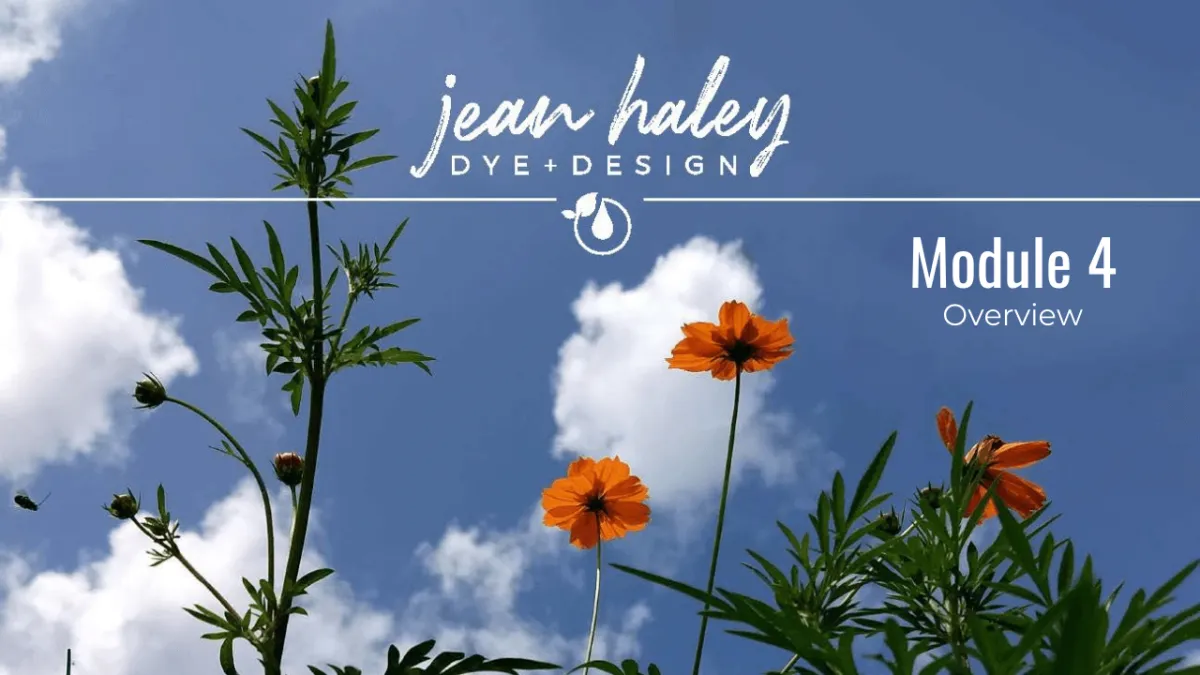
Module 4: Foraging & Harvesting Color
Dye plants are everywhere!
But that doesn’t mean that we can just go harvest whatever we want from wherever we see it.
You’ll learn about some resources and guidelines for best practices when foraging and harvesting colors.
Here's What You'll Learn in From Plant To Dye Pot...

Module 0: Getting Ready to Dye...
What equipment and supplies do you need? How do I make sure my dyes are colorfast?
The key to colorfastness with natural dyes is all about how you get your fibers ready to take (and keep!) the dye.
This is where you’ll learn how to scour and mordant your wool – the 2 most important steps for dyeing with nature.

Module 1: Extracting Color + Dyeing Your Wool
Natural dyes come in different formats – plant leaves, stems, bark, flowers, insects, extracts.
Some dyes are sensitive to temperature and will give you different colors depending on how hot you get them.
You’ll learn how to extract different natural dyes, use extracts, and get your wool to soak them up.

Module 2-1: Color Theory + Making an Indigo Vat
Color theory applies with natural dyes!
We’ll do a quick review of color theory basics and then we’ll spend the majority of our time here on creating an organic indigo vat.
After you get your vat going, you’ll need to care for it properly if you want it to last.

Module 2-2: Overdyeing + Shifting Colors
We’ll put that color theory to work with some overdyeing!
You’ll see what happens when we take the wools dyed in Module 1 and overdye them with another dye.
Here’s where you learn which overdye combos work best. You’ll also learn how to get 5+ colors from a single dye pot!

Module 3: Creating Interest in Your Wools
As rug hookers and wool crafters, we like our wool to have interest – texture and depth...
Maybe more than one color or speckled or mottled or… so many possibilities!
Here’s where we’ll play and experiment with different techniques to create that interest.

Module 4: Foraging & Harvesting Color
Dye plants are everywhere!
But that doesn’t mean that we can just go harvest whatever we want from wherever we see it.
You’ll learn about some resources and guidelines for best practices when foraging and harvesting colors.
You also get these BONUSES!
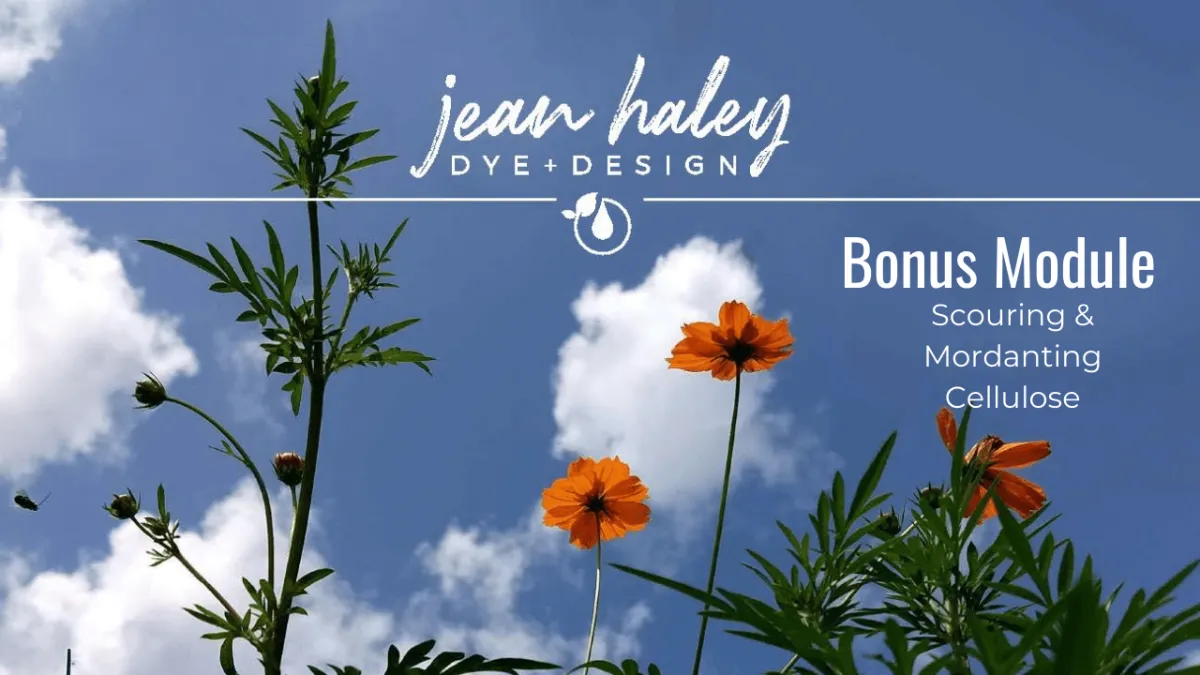
Bonus 1: Scouring & Mordanting Cellulose
Learn the process for scouring and mordanting cotton and linen and other plant-based fibers.
Even if wool is your jam, you’ll probably want to dye some cotton or linen or hemp at some point.
Even if it’s just a t-shirt that you want to overdye or maybe you want to make a set of custom dinner napkins for a friend.
Bonus 2: Dye Lake
When you have dye left in the dye pot that you don’t want to waste, you can turn your dye into a pigment and save it as a paste in a container the size of a deli cup.
You can then use this later to dye wool or to make paints!
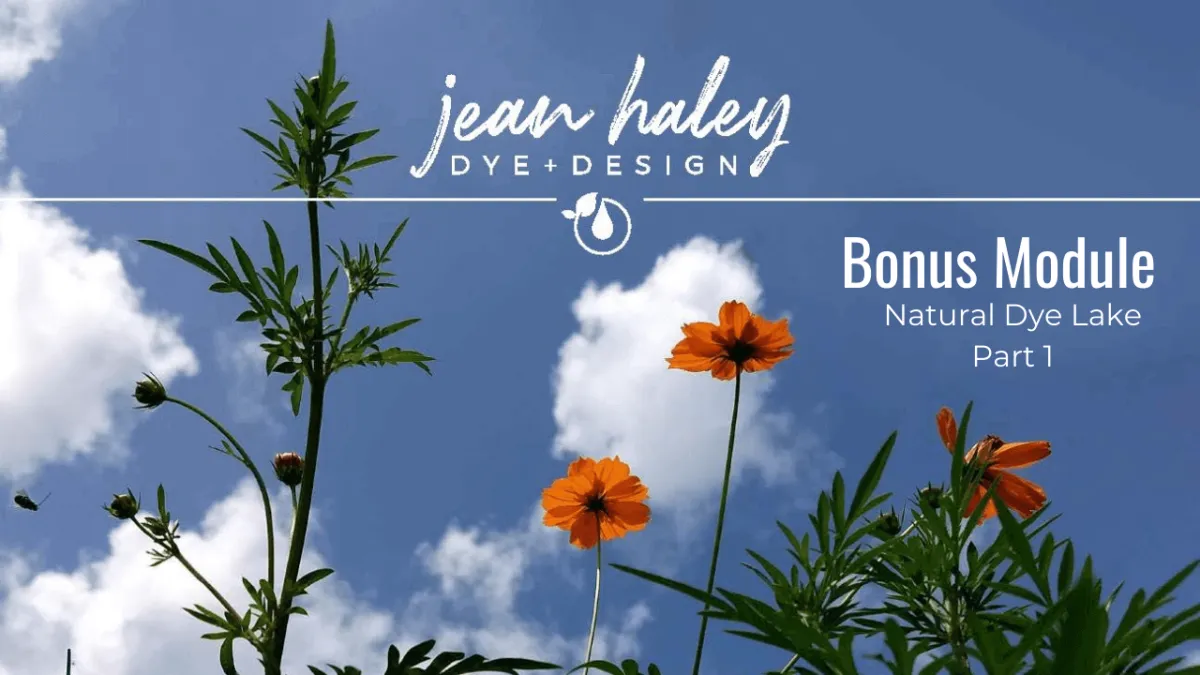
You also get these BONUSES!

Bonus 1: Scouring & Mordanting Cellulose
Learn the process for scouring and mordanting cotton and linen and other plant-based fibers.
Even if wool is your jam, you’ll probably want to dye some cotton or linen or hemp at some point.
Even if it’s just a t-shirt that you want to overdye or maybe you want to make a set of custom dinner napkins for a friend.

Bonus 2: Dye Lake
When you have dye left in the dye pot that you don’t want to waste, you can turn your dye into a pigment and save it as a paste in a container the size of a deli cup.
You can then use this later to dye wool or to make paints!
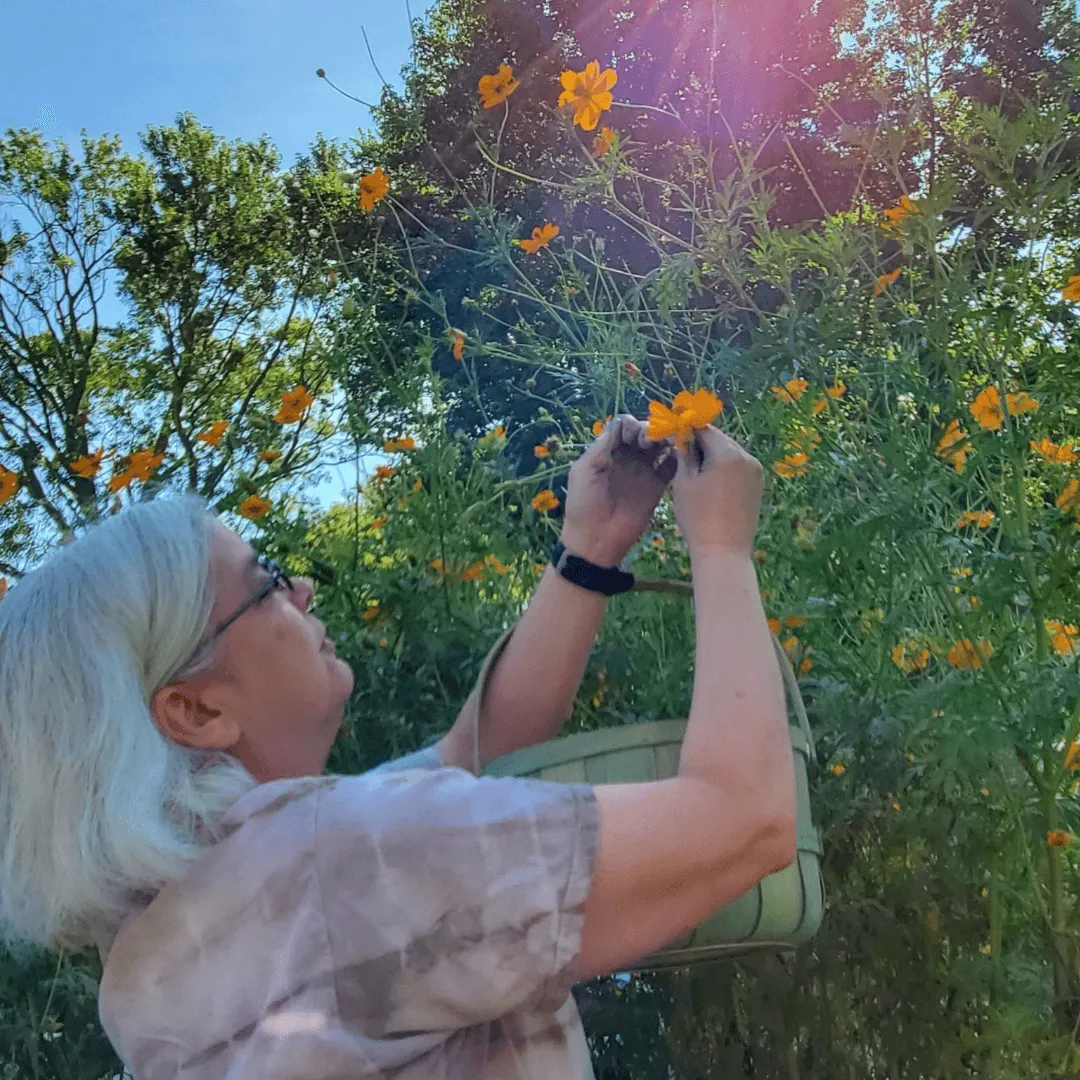
Hi! I'm Jean
I love natural dyeing so much I turned my front yard into a dye garden!
I've had the great fortune to study with some of the world's best natural dyers - I learned from Michel Garcia at a master class in Scotland, from Catherine Ellis at the famed Arrowmont School of Arts and Crafts, and from Rowland Ricketts at Indiana University.
Natural dyes are an easy way to reduce your carbon footprint (synthetic dyes are petroleum/fossil fuel based products) and increase your time outdoors! If gardening is your jam or you love hiking, biking, kayaking, or canoeing in the beautiful outdoors, then natural dyes are for you!
Register now for the FREE mini-workshop to get you started on the right foot. Scroll up and complete the registration form now!
